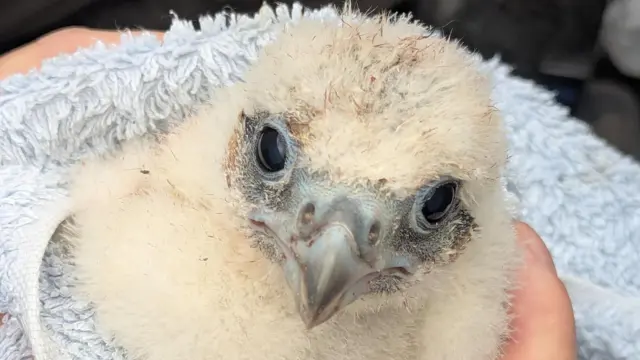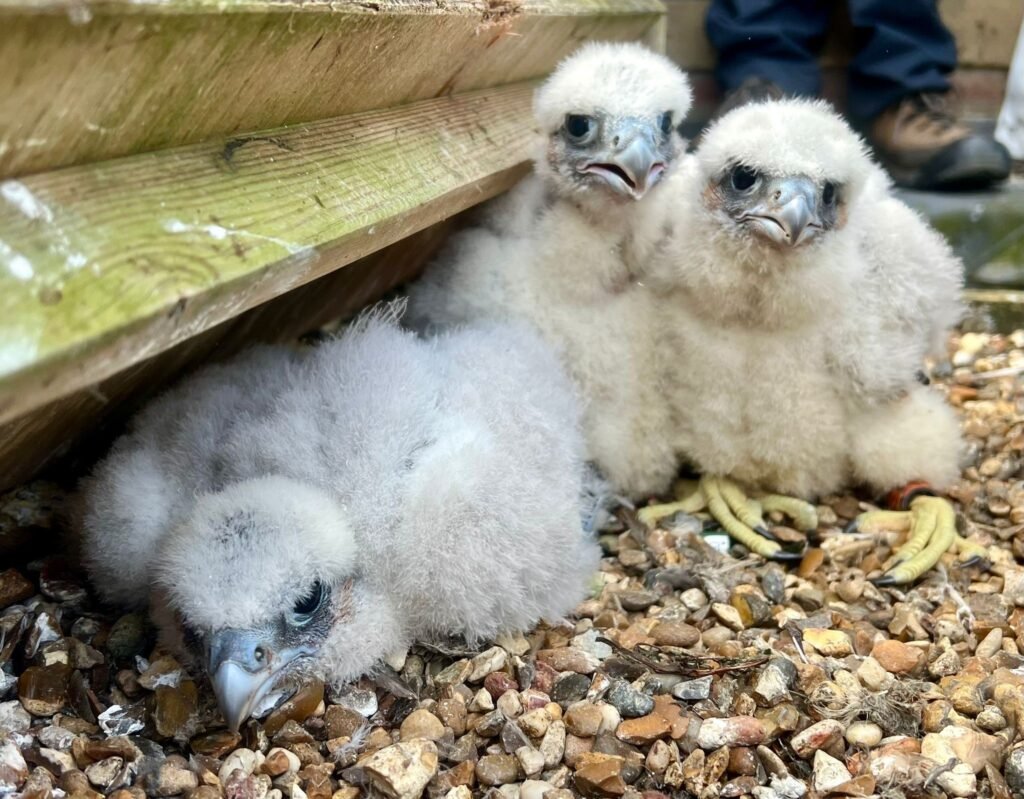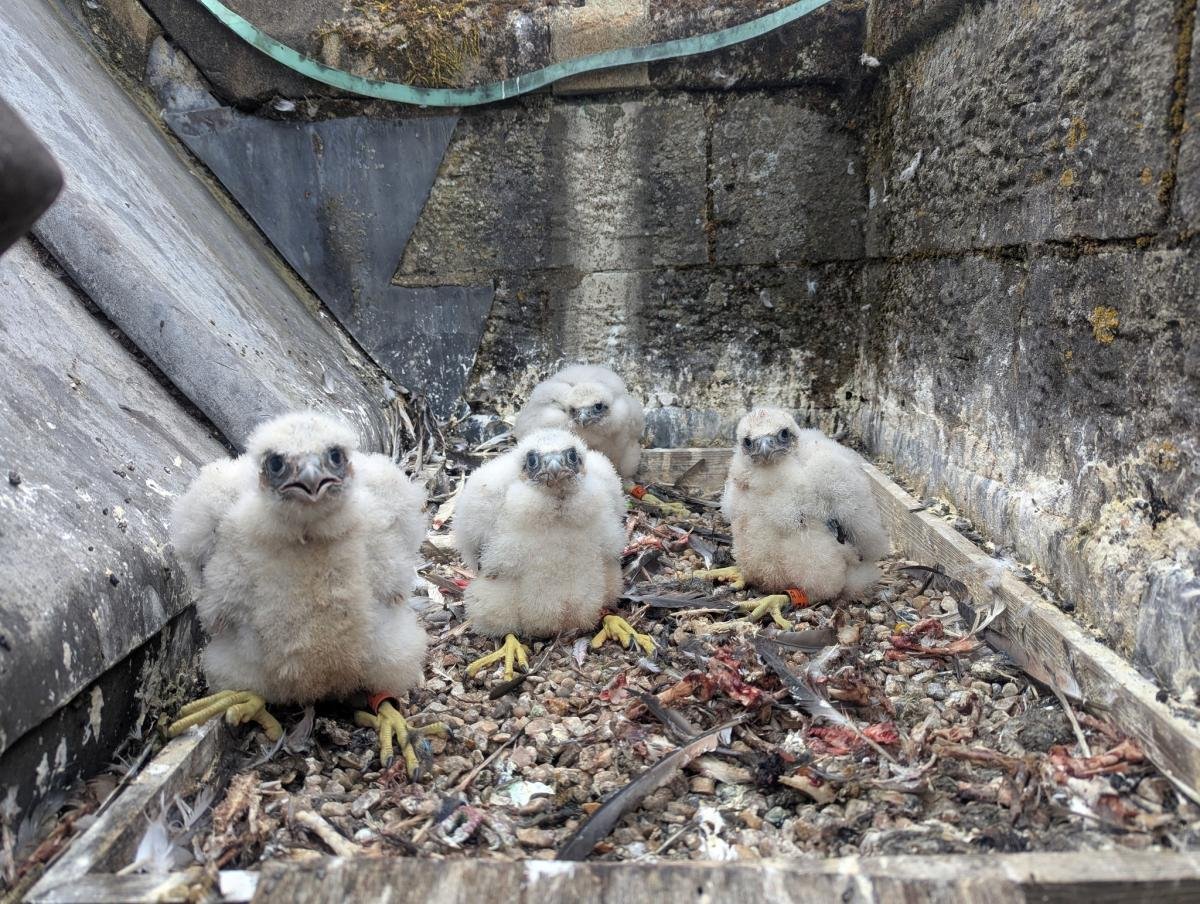Peregrine Falcon Chicks Hatch at Romsey Abbey
Peregrine falcon chicks have hatched for the first time at Romsey Abbey in Hampshire, marking an exciting milestone for local conservationists. The four chicks, believed to be around 20 days old, are thriving in a historic gulley, offering a rare glimpse into the breeding success of these magnificent birds. This breakthrough highlights the delicate balance of peregrine populations in the region, which have experienced fluctuating numbers in recent years.
Peregrine Falcon Chicks at Romsey Abbey: Details of the Nesting Season
In 2024, Romsey Abbey in Hampshire witnessed its first known peregrine nest when a pair of falcons laid two eggs. Unfortunately, those eggs did not hatch. This year, however, the same parents have successfully raised four peregrine falcon chicks in Hampshire—three males and one female—in a nest located in an old nest box within the abbey’s gulley. Remarkably, the falcons bypassed a modern nest tray with a webcam, choosing the more traditional nesting spot.
Challenges Facing Peregrine Falcons in Hampshire

Despite this encouraging development, peregrine falcon nesting sites across Hampshire have decreased from an average of about 20 nests to roughly 14 in the current year. Experts attribute this decline to several factors, including increased competition for prime nesting sites. The UK’s peregrine population has rebounded to over 2,000 pairs from a low of about 350 pairs in the 1960s, following pesticide use and wartime impacts. This growth has led to territorial conflicts, especially among young female peregrines vying for established nests.
Threats to Peregrine Falcons: Disease and Environmental Pressures
Disease also poses a significant risk to peregrine populations. Bird flu, prevalent for around five years, has notably affected sea birds and raptors. Peregrines that consume infected gulls risk contracting this disease, which has led to fatalities, including two peregrines nesting recently at Christchurch Priory in Dorset. Such health threats compound the challenges already faced by peregrines, impacting their survival and breeding success.
What the Future Holds for Peregrine Falcons at Romsey Abbey and Beyond

The peregrine chicks at Romsey Abbey are expected to start flying within four to six weeks, a critical stage for their development and survival. Conservationists hope that the successful hatchings will inspire increased attention to protecting peregrine habitats. Efforts to monitor nests, reduce threats, and promote awareness are vital to sustaining these birds’ recovery in Hampshire and throughout the UK.




